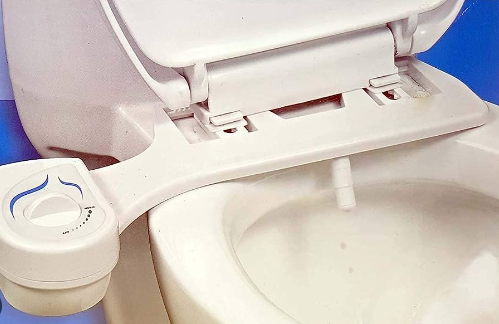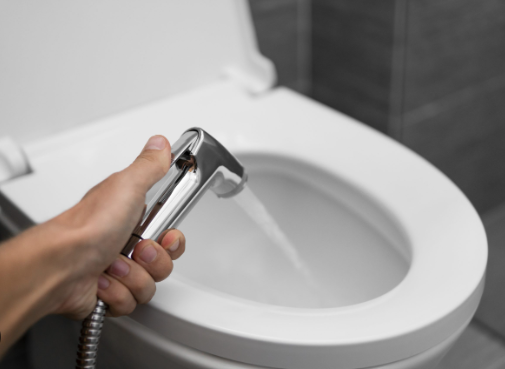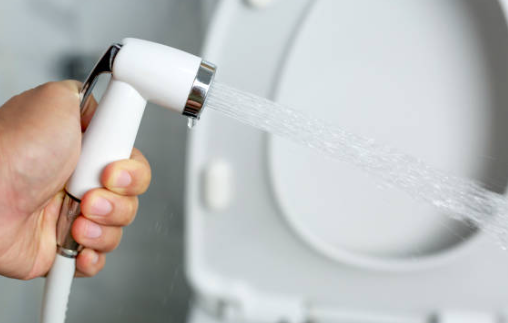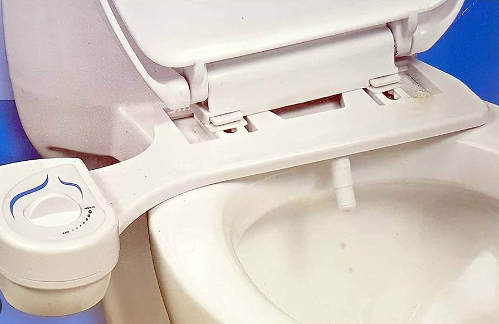As I begin this quirky yet vital journey of bidet water pressure exploration, I can’t help but chuckle at how far we’ve come in terms of personal hygiene. Bidets, those elegant and modern contraptions designed to pamper our posterior regions, have been transforming bathrooms worldwide. If you’ve ever relished the cool embrace of bidet cleansing, you’d agree it’s an experience akin to a gentle waterfall caressing your nether areas. But what happens if the bidet water pressure is too low?
Low water pressure in a bidet can be caused by a variety of factors, and troubleshooting the issue may require some investigation. Here are some common reasons why bidet water pressure might be too low:
- Water Supply Issues
- Clogged Water Line
- Wrong Bidet Settings – Pressure Control
- Low Water Pressure in the House
- Clogged Water Filter or Softener:
- Plumbing Issues Such as Blocked Pipes or Wrong Pipe Sizes
- Water Heater Issues
- Bidet Model and Installation
- Local Water Conditions
- Hard Water
If you’ve checked all of the above and still experience low water pressure in your bidet, it may be a more complex plumbing issue, and you may need to consult a professional plumber or the manufacturer’s customer support for further assistance.
Understanding Bidet Water Pressure: Finding the Goldilocks Zone
So, what’s all the fuss about water pressure? Let me put it this way: ever tried to savor a hearty soup through a cocktail straw? Just as that straw isn’t cut out for your culinary escapades, a bidet isn’t meant to function with insufficient water pressure. Ideally, bidets thrive in a water pressure range of about 20 to 80 psi (pounds per square inch). Below this range, you might as well be trying to wash an elephant with a watering can.
Think of water pressure as the driving force behind bidet functionality. The magic of the bidet lies in the finely calibrated balance between pressure and flow. In the ideal pressure range, the water streams out in a gentle yet invigorating cascade, ensuring efficient cleansing and a refreshing post-toilet experience. Outside this range, your bidet might offer nothing more than a hesitant dribble that leaves you feeling more frustrated than fresh.

Causes of Low Bidet Water Pressure
Here’s the scoop on why your bidet might be delivering less pressure than a kitten’s purr. The causes can be as varied as a box of chocolates.
Water Supply Issues: Trickle Trouble
Imagine settling into your bidet oasis, ready for a refreshing cleanse, only to be greeted by a feeble trickle of water. This often happens when the water supply to your bidet is inadequate. Maybe your home plumbing isn’t exactly flowing like the Nile, or perhaps the water line to the bidet is clogged or restricted, suffocating your cleansing dreams.
To troubleshoot water supply issues, begin by checking your home’s water pressure. A simple pressure gauge from your local hardware store can be a handy tool here. If you find that your main water supply pressure is low, it’s time to have a heart-to-heart with your plumbing system. Sometimes, pressure-reducing valves that regulate water flow to your home might be set too low, and a quick adjustment can work wonders.
Plumbing System Problems: Pipe Perils
Plumbing, ah, the mystical maze of pipes and valves that hides behind our walls. When this labyrinth becomes blocked, it can hinder the water’s journey to your bidet. Clogged pipes and filters act like traffic jams, causing water to reluctantly meander its way to your bidet, leaving you in a damp spot of frustration. Another possible antagonist is a malfunctioning pressure regulator. Think of it as the conductor of the water orchestra; if it’s off-key, you’ll get a symphony of splutters instead of a gushing serenade.
To address these plumbing perils, it’s time to unleash your inner plumber. First, locate your bidet’s water supply valve and turn it off. This prevents any accidental waterworks as you venture deeper into your plumbing’s mysteries. Next, identify and inspect the pipes and filters leading to your bidet. Sediment buildup, rust, or debris might be the culprits, and a thorough cleaning or replacement can often do the trick. And don’t forget about that pressure regulator – if it’s throwing a temper tantrum, it might be time to show it the door and bring in a new, well-behaved replacement.

Bidet Configuration and Installation: A Balancing Act
Bidets are no different from delicate ballet performances; one wrong step, and the show’s ruined. Incorrect bidet installation can disrupt the water flow, rendering your bidet experience more of a dribble than a dance. Faulty bidet valves or connectors might also be lurking in the shadows, determined to sabotage your cleansing escapades.
It’s time to revisit the installation manual you might have casually discarded in your bidet excitement. Ensure that the bidet’s valves and connectors are installed correctly and tightly sealed. Sometimes, a loose connection can lead to water leakage, reducing the pressure and turning your bathroom into a watery mess.
Diagnosing Low Water Pressure in Your Bidet: The Detective’s Handbook
Time to put on your Sherlock Holmes hat and grab your magnifying glass—metaphorically, of course. Diagnosing low bidet water pressure is an adventure that involves detective work and a dash of scientific curiosity. I’ve laid out a handy guide for you to follow, ensuring you’re well-equipped to tackle this conundrum head-on.
- Check Water Pressure: As I mentioned earlier, a pressure gauge is your best friend here. Attach it to a faucet or a hose bib and turn on the water. Note the reading – anything below 20 psi might hint at impending bidet troubles.
- Inspect Water Lines: If the water pressure reading is alarmingly low, inspect the water lines leading to your bidet. Are they clear of obstructions? Any visible kinks or bends can impede water flow.
- Valve and Connection Check: Take a peek under the hood – in this case, under your bidet. Verify that all valves are open and all connectors are securely fastened. A loose connection could be the sneaky culprit behind your pressure woes.
- Main Water Supply Test: To determine if the problem lies in your home’s water supply, test the water pressure in other faucets and fixtures. If the pressure is consistently low throughout your home, it’s time to consider a chat with your plumber.
- Pressure Regulator Examination: Locate your home’s pressure regulator (often found near the water meter). If it’s accessible, inspect it for any signs of damage or malfunction.

Fear not, brave bidet enthusiast, for there are ways to battle the low pressure dragon and restore the waterfall-like flow to your cleansing endeavors.
Water Supply Solutions: Unblocking the Flow
To restore bidet nirvana, you must first ensure a healthy water supply. If the pressure feels weaker than a kitten’s sneeze, check your home’s main water supply and valves. It’s like ensuring your jetpack is fueled before an intergalactic journey. If you spot blockages, clear them like a knight vanquishing obstacles on the quest for bidet glory.
Plumbing System Fixes: Clearing the Path
Clogged pipes and filters are like the cholesterol of plumbing; they obstruct the flow. Fear not, for a simple cleaning or replacement can often breathe new life into your bidet’s water pressure. Remember that pressure regulator I mentioned earlier? If it’s strayed from its duty, it might need adjusting or replacing to ensure a harmonious water flow.
Bidet Configuration and Installation: The Art of Alignment
Bidet installation isn’t just a task; it’s an art. Confirm that your bidet components are harmoniously aligned, like stars in a constellation. Carefully inspect valves and connectors, ensuring they’re not harboring nefarious plans to sabotage your pressure dreams.
DIY vs. Professional Assistance: The Tug of War
Ah, the eternal struggle between tackling problems yourself and enlisting the help of a professional. While some low pressure issues can be resolved with your trusty toolbox, don’t be afraid to call in the cavalry when you’re outmatched. Plumbing can be a maze, and sometimes, even the best of us need a guide.

Preventing Future Bidet Water Pressure Issues: A Maintenance Ballet
You’ve defeated the low pressure monster; now, how do you keep it at bay? Regular maintenance is the key. Just as you’d take your car for a tune-up, your bidet needs a little love too. Perform routine checks and keep an eye out for any signs of pressure trouble. Additionally, embrace bidet etiquette – don’t overload the system with back-to-back users like a rush-hour subway.
Wrapping Up
So, there you have it, dear reader, a wild and whimsical journey through the world of bidet water pressure. From identifying causes to implementing solutions and even mastering the art of maintenance, you’re now armed with knowledge to conquer low pressure troubles. Remember, your bidet isn’t just a convenience; it’s a sanctuary of self-care.
Treat it well, and it shall reward you with a cleansing experience like no other. As we bid adieu, may your water pressure always be Goldilocks-approved – not too high, not too low, but just right. And hey, if you’re hungry for more home plumbing wisdom, don’t hesitate to dive into the treasure trove of related articles waiting to tickle your intellectual taste buds. Happy bidet-ing!







